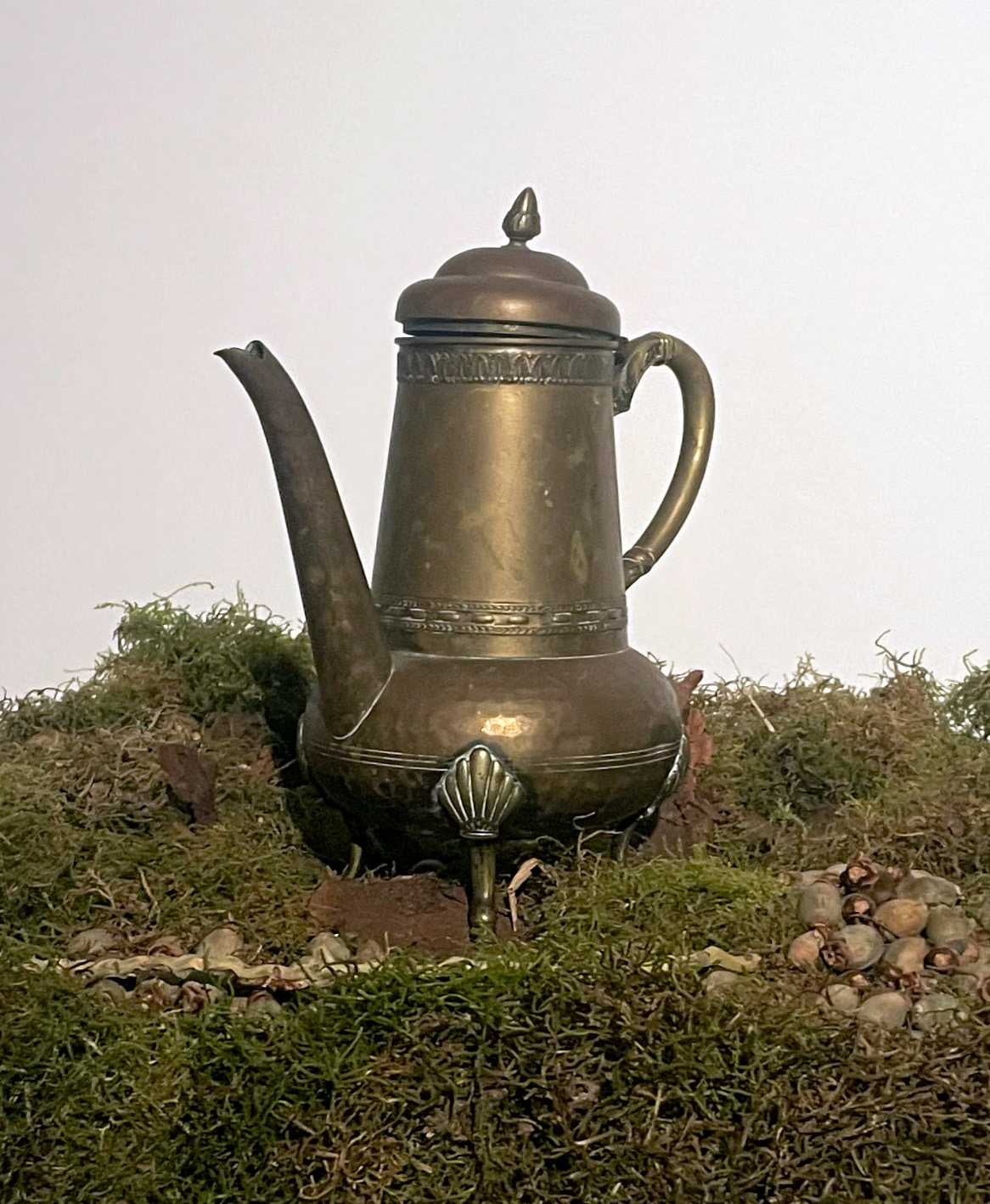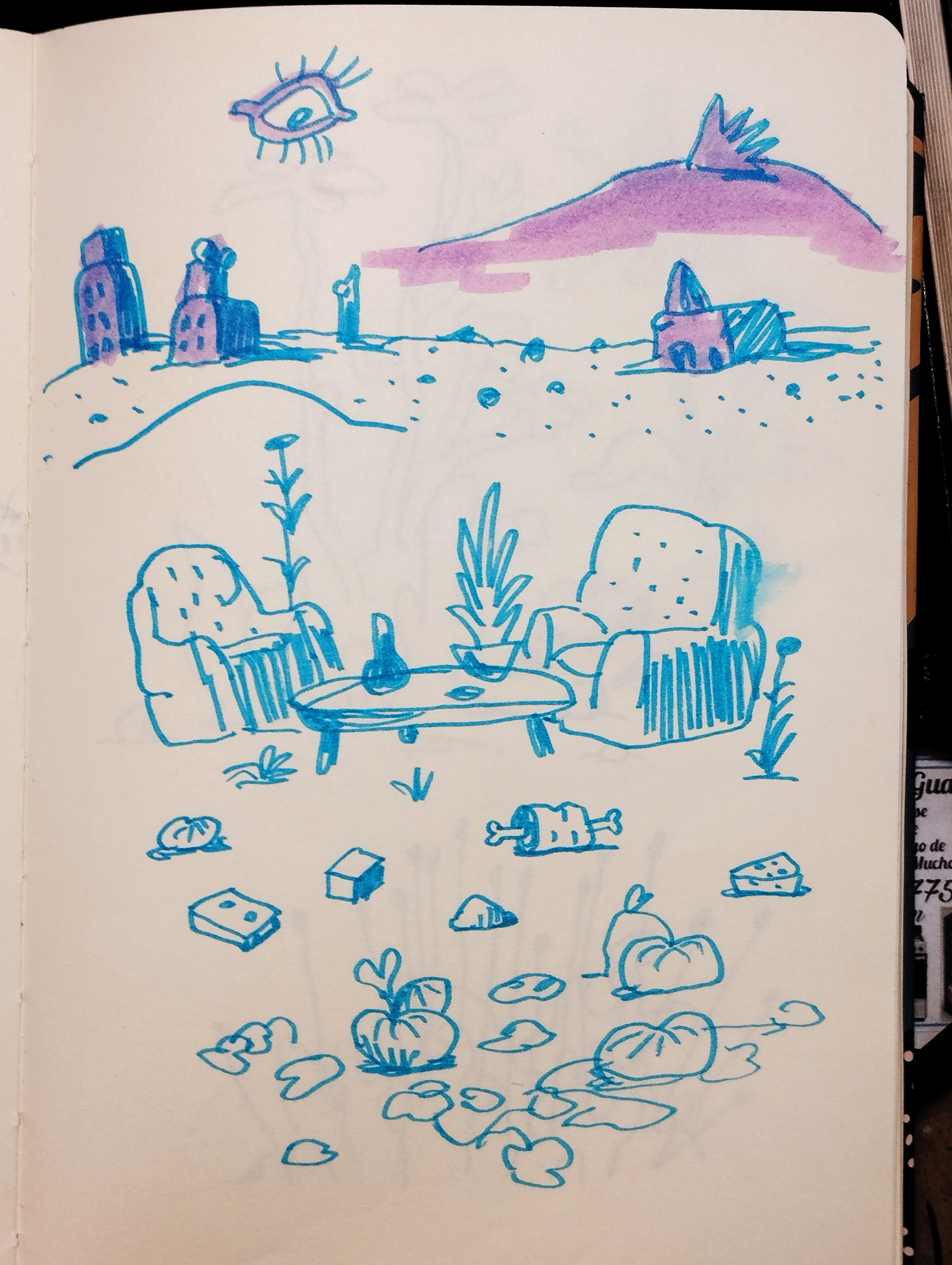Solo Exhibition at Andreani Foundation (Buenos Aires) 2022
Installation, Simulation, Plants, Paintings.
Installation, Simulation, Plants, Paintings.
The installation -with the same name that the project- consisted of a virtual ecosystem that is projected on the walls of the space, while an ecosystem of living plants (Designed in collaboration with the gardener Julia Nin) invaded the rest of the space.
While the digital scenarios and characters appear projected on the walls, the observer could walk around the room between mounds of earth full of plants and vines hanging from the ceiling. The virtual ecosystem was generated in real time by a 3D simulation program, similar to a video game that plays itself or a play improvised by ghostly caricatures. The program synthesizes environments from the combination of different elements and then populates those environments with characters equipped with artificial intelligence.
The result of this generative system is a constant zapping of landscapes and situations that can be seen for days without repeating.
Exposición Individual en Fundación Andreani (Buenos Aires) 2022
Instalación, Simulación, Plantas, Pinturas.
La instalación -del mismo nombre que el proyecto- consistió en un ecosistema virtual que se proyecta en las paredes del espacio, mientras que un ecosistema de plantas vivas (diseñado en colaboración con la jardinera Julia Nin) invadió el resto del espacio.
Mientras los escenarios y personajes digitales aparecen proyectados en las paredes, el observador podría caminar por la habitación entre montículos de tierra llenos de plantas y enredaderas que cuelgan del techo. El ecosistema virtual fue generado en tiempo real mediante un programa de simulación 3D, similar a un videojuego que se juega solo o una obra de teatro improvisada a partir de caricaturas fantasmales. El programa sintetiza entornos a partir de la combinación de diferentes elementos y luego los puebla con personajes equipados con inteligencia artificial.
El resultado de este sistema generativo es un zapping constante de paisajes y situaciones que pueden verse durante días sin repetirse.
Instalación, Simulación, Plantas, Pinturas.
La instalación -del mismo nombre que el proyecto- consistió en un ecosistema virtual que se proyecta en las paredes del espacio, mientras que un ecosistema de plantas vivas (diseñado en colaboración con la jardinera Julia Nin) invadió el resto del espacio.
Mientras los escenarios y personajes digitales aparecen proyectados en las paredes, el observador podría caminar por la habitación entre montículos de tierra llenos de plantas y enredaderas que cuelgan del techo. El ecosistema virtual fue generado en tiempo real mediante un programa de simulación 3D, similar a un videojuego que se juega solo o una obra de teatro improvisada a partir de caricaturas fantasmales. El programa sintetiza entornos a partir de la combinación de diferentes elementos y luego los puebla con personajes equipados con inteligencia artificial.
El resultado de este sistema generativo es un zapping constante de paisajes y situaciones que pueden verse durante días sin repetirse.
Installation view
In the simulation, the Entes came across various remains of technology related to our capacity for representation on the digital plane. The Tektronix Storage Tube computer that Martin Newell (pioneer of computer graphics) used in 1975 to create the Utah teapot, the first three-dimensional model that emulated an object from the physical world. The Fairlight CMI computer, which in 1979 revolutionized the music industry by allowing sounds to be manipulated digitally, introducing the concept of sampling. The Entes reflected on the passage between the mid-70s to the present, where practically all the objects in our world are cloned in the form of three-dimensional digital models.





